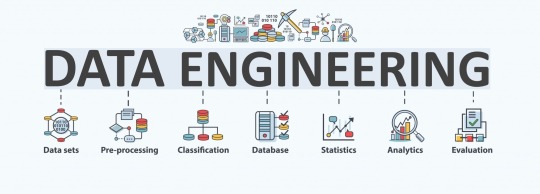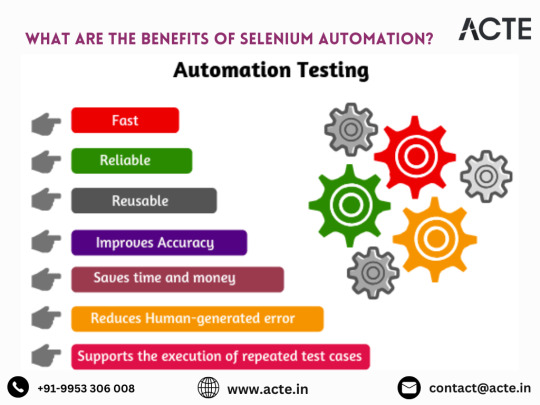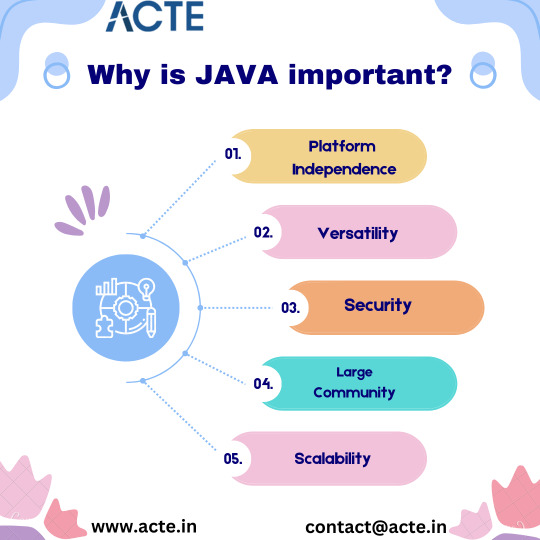#java is platform independent
Explore tagged Tumblr posts
Text
2 notes
·
View notes
Text
Java The Language Of Choice Among The Developers
The various factors supportive of Java are the object oriented designing, platform independency, robustness of language, multithreading support, copious standard library and dynamic character all make Java a multipurpose and efficient language. Such popularity in different areas including web applications and mobile development proves its appropriateness in the context of software development. Java always stays updated and develops a community, and it remains the programming language of choice among the developers.
#java#javascript#javaprogramming#javaris x#coding#computerscience#machine learning#programming#python
2 notes
·
View notes
Text
Best IT Courses In Bhubaneswar:- seeree services pvt ltd.
Introduction:- seeree is one of the best IT training institute and Software industry, features completely Industrial training on Python , PHP , .NET , C Programming,Java , IOT , AI , GD PI , ORACLE and ALL CERTIFICATION COURSES as well as provides seminar,cultural activity and jobs
Courses we provided:- 1) Java Fullstack 2) Python Fullstack 3) PHP Fullstack 4) Preplacement Training & Sp. Eng 5) .NET Fulstack 6) SEO/Digital Marketing 7) SAP 8) MERN 9) Software Testing 10)Data Analyst 11)Data Science 12)Data Engineering 13)PGDCA 14)Tally 15)Graphics Design
Course1:- Java Fullstack

A Class in Java is where we teach objects how to behave. Education at seeree means way to success. The way of teaching by corporate trainers will bloom your career. We have the best java training classes in Bhubaneswar. 100% Placement Support. Job Support Post Training. This course will give you a firm foundation in Java, commonly used programming language. Java technology is wide used currently. Java is a programming language and it is a platform. Hardware or software environment in which a program runs, known as a platform. Since Java has its own Runtime Environment (JRE) and API, it is called platform. Java programming language is designed to meet the challenges of application development in the context of heterogeneous, network-wide distributed environment. Java is an object-oriented programming (OOP) language that uses many common elements from other OOP languages, such as C++. Java is a complete platform for software development. Java is suitable for enterprise large scale applications.]
Course2:- Python Fullstack

Seeree offers best python course in Bhubaneswar with 100% job assurance and low fee. Learn from real time corporate trainers and experienced faculties. Groom your personality with our faculty. Seeree helps to build confidence in students to give exposure to their skills to the company.
Python is dynamically typed , compiled and interpreted , procedural and object oriented , generalized , general-purpose , platform independent programming language. Python is a high-level, structured, open-source programming language that can be used for a wide variety of programming tasks.
Course3:- PHP Fullstack

seeree is the best training institute which provide PHP Training courses in bhubaneswar and all over odisha We aim the students to learn and grow altogether with the need of IT firms.
PHP is a server scripting language, and a powerful tool for making dynamic and interactive Web pages. PHP is a widely-used, free, and efficient alternative to competitors such as Microsoft's ASP.
Course4:- Preplacement Training & Sp. Eng

Welcome to SEEREE Institute, where excellence meets opportunity. At SEEREE, we are dedicated to providing a transformative learning experience that empowers students to achieve their goals and contribute to a brighter future.
Our institute offers cutting-edge courses designed to meet the needs of the ever-evolving global landscape. With a team of highly qualified instructors and state-of-the-art facilities, we ensure a supportive and inspiring environment for learning and growth.
Whether you're here to develop new skills, explore innovative fields, or pursue personal and professional success, SEEREE Institute is the perfect place to begin your journey. Thank you for choosing us, and we look forward to being a part of your success story.
Course5:- .NET Fullstack

Seeree offers best .NET course in Bhubaneswar with 100% job assurance and low fee. Learn from real time corporate trainers and experienced faculties. Groom your personality with our faculty. Seeree helps to build confidence in students to give exposure to their skills to the company.
Course6:- SEO/Digital Marketing

In today's fast-paced digital world, businesses thrive on visibility, engagement, and strategic online presence. At SEEREE, we empower you with the skills and knowledge to master the art of Search Engine Optimization (SEO) and Digital Marketing.
Our comprehensive program is designed for beginners and professionals alike, covering everything from keyword research, on-page and off-page SEO, and content marketing, to social media strategies, PPC campaigns, and analytics.
With hands-on training, real-world projects, and guidance from industry experts, we ensure you're equipped to drive measurable results and excel in this dynamic field.
Join us at SEEREE Institute and take the first step towards becoming a leader in the digital marketing landscape!"
Course7:- SAP

SAP refers to Systems, Applications, and Products in Data Processing. Some of the most common subjects covered in these courses include human resource software administration, database management, and business training. Obtaining SAP certification can be done on a stand-alone basis or as part of a degree program.
Course8:- MERN

Seeree offers the best MERN course in Bhubaneswar with 100% job assurance and low fees. Learn from real-time corporate trainers and experienced faculty. Seeree helps students build confidence and gain skills to excel in company roles.
Are you ready to step into the exciting world of web development? At SEEREE, we bring you a comprehensive MERN Stack course that equips you with the skills to build modern, dynamic, and responsive web applications from start to finish.
The MERN Stack—comprising MongoDB, Express.js, React.js, and Node.js—is one of the most sought-after technologies in the web development industry. Our program is designed to help you master each component of the stack, from creating robust backends and managing databases to crafting dynamic frontends and seamless APIs.
Course9:- Software Testing

Seeree offers best Testing course in Bhubaneswar with 100% job assurance and low fee. Learn from real time corporate trainers and experienced faculties. Groom your personality with our faculty. Seeree helps to build confidence in students to give exposure to their skills to the company.
In the fast-paced world of software development, ensuring the quality and reliability of applications is crucial. At SEEREE, we offer a comprehensive Software Testing course designed to equip you with the skills and techniques needed to excel in this essential field.
Our program covers all aspects of software testing, from manual testing fundamentals to advanced automation tools and frameworks like Selenium, JIRA, and TestNG. You’ll learn to identify bugs, write test cases, execute test scripts, and ensure software meets high-quality standards.
With hands-on training, real-world scenarios, and guidance from experienced industry professionals, you’ll be prepared to take on roles like Quality Assurance Engineer, Test Analyst, and Automation Tester.
Join SEEREE Institute and gain the expertise to become a key player in delivering flawless software solutions. Your journey to a rewarding career in software testing starts here!"
Course10:- Data Analyst

Seeree offers the best Data Analyst course in Bhubaneswar with 100% job assurance and affordable fees. Our comprehensive curriculum is designed to cover all aspects of data analysis, from data collection and cleaning to advanced data visualization techniques. Learn from real-time corporate trainers and experienced faculty members who bring industry insights into the classroom. Enhance your analytical skills and boost your career prospects with hands-on projects and real-world case studies. Our faculty also focuses on grooming your personality and soft skills, ensuring you are well-prepared for interviews and workplace environments. Seeree is dedicated to building confidence in students, providing them with the necessary exposure to showcase their skills to top companies in the industry.
Course11:- Data Science

Seeree offers the best Data Science course in Bhubaneswar with 100% job assurance and affordable fees. Our comprehensive curriculum is designed to cover all aspects of data science, from data collection and cleaning to advanced data visualization techniques. Learn from real-time corporate trainers and experienced faculty members who bring industry insights into the classroom. Enhance your analytical skills and boost your career prospects with hands-on projects and real-world case studies. Our faculty also focuses on grooming your personality and soft skills, ensuring you are well-prepared for interviews and workplace environments. Seeree is dedicated to building confidence in students, providing them with the necessary exposure to showcase their skills to top companies in the industry.
Course12:- Data Engineering

In the era of big data, the ability to design, build, and manage scalable data infrastructure is one of the most in-demand skills in the tech industry. At SEEREE, we are proud to offer a comprehensive Data Engineering course that prepares you for a career at the forefront of data-driven innovation.
Our program covers essential topics such as data modeling, ETL processes, data warehousing, cloud platforms, and tools like Apache Spark, Kafka, and Hadoop. You’ll learn how to collect, organize, and transform raw data into actionable insights, enabling businesses to make smarter decisions.
With real-world projects, expert mentorship, and hands-on experience with the latest technologies, we ensure that you are industry-ready. Whether you’re starting fresh or upskilling, this program will empower you to unlock opportunities in the rapidly growing field of data engineering.
Join SEEREE Institute and take the first step toward building the data pipelines that power tomorrow’s technology!"
Course13:- PGDCA

Seeree offers the best MERN course in Bhubaneswar with 100% job assurance and low fees. Learn from real-time corporate trainers and experienced faculty. Seeree helps students build confidence and gain skills to excel in company roles.
In today’s digital age, computer applications are at the heart of every industry, driving innovation and efficiency. At SEEREE Institute, our Post Graduate Diploma in Computer Applications (PGDCA) program is designed to provide you with in-depth knowledge and hands-on skills to excel in the IT world.
This program offers a comprehensive curriculum covering programming languages, database management, web development, software engineering, networking, and more. Whether you aim to enhance your technical expertise or step into a rewarding career in IT, PGDCA at SEEREE equips you with the tools to succeed.
With expert faculty, state-of-the-art labs, and real-world projects, we ensure that you gain practical experience and a strong theoretical foundation. By the end of the program, you’ll be prepared for roles such as software developer, system analyst, IT manager, or database administrator.
Course14:- Tally

Seeree offers the best Tally course in Bhubaneswar with 100% job assurance and low fees. Learn from real-time corporate trainers and experienced faculty. Seeree helps students build confidence and gain skills to excel in company roles.
In today’s business world, efficient financial management is key to success, and Tally is one of the most trusted tools for accounting and financial operations. At SEEREE Institute, we offer a comprehensive Tally course designed to equip you with the skills needed to manage business finances effortlessly.
Our program covers everything from the basics of accounting and bookkeeping to advanced features like GST compliance, inventory management, payroll processing, and generating financial reports. With hands-on training and real-world applications, you’ll gain practical expertise in using Tally effectively for businesses of any scale.
Whether you're a student, a professional, or a business owner, our Tally program is tailored to meet your needs and enhance your career prospects in the fields of accounting and finance.
Course15:- Graphics Design

In the world of creativity and communication, graphic design plays a vital role in bringing ideas to life. At SEEREE Institute, our Graphic Design course is tailored to help you unlock your creative potential and master the art of visual storytelling.
Our program covers a wide range of topics, including design principles, color theory, typography, branding, and user interface design. You’ll gain hands-on experience with industry-standard tools like Adobe Photoshop, Illustrator, and InDesign, enabling you to create stunning visuals for print, digital media, and beyond.
Whether you're an aspiring designer or a professional looking to sharpen your skills, our expert trainers and real-world projects will provide you with the knowledge and confidence to excel in this competitive field.
Join SEEREE Institute and start your journey toward becoming a skilled graphic designer. Let’s design your future together!"
2 notes
·
View notes
Text
The History of Java Programming: From Its Humble Beginnings to Dominance in Software Development
Java is one of the most influential programming languages in the modern era, known for its versatility, portability, and robustness. Developed in the early 1990s, it has left a lasting impact on the software industry, helping build countless applications, from mobile games to enterprise-level software. In this blog, we'll explore Java’s fascinating history, its motivations, its growth, and its influence on today’s technology landscape.
The Genesis of Java
Java originated in the early 1990s as part of a project at Sun Microsystems. The project, initially called the "Green Project," was led by James Gosling, alongside Mike Sheridan and Patrick Naughton. The team's goal was to develop a language for embedded systems, specifically for appliances like televisions, which were beginning to incorporate smart technology.
The language was initially called "Oak," named after an oak tree outside Gosling's office. However, due to a trademark conflict, it was eventually renamed Java. The name "Java" was inspired by a type of coffee popular with the developers, signifying their relentless energy and drive.
Motivation Behind Java's Creation
Java was developed to address several key challenges in software development at the time:
Portability: Most languages of the day, such as C and C++, were platform-dependent. This meant that software needed significant modification to run on different operating systems. Gosling and his team envisioned a language that could be executed anywhere without alteration. This led to the now-famous slogan, "Write Once, Run Anywhere" (WORA).
Reliability: C and C++ were powerful, but they had pitfalls like manual memory management and complex pointers, which often led to errors. Java aimed to eliminate these issues by offering features like automatic memory management through garbage collection.
Internet Revolution: As the internet began to take shape, Java was positioned to take advantage of this growing technology. Java’s platform independence and security made it an ideal choice for internet-based applications.
The Birth of Java (1995)
The Green Project initially produced a device called Star7, an interactive television set-top box. While innovative, it didn't achieve widespread success. However, by the mid-1990s, the internet was gaining traction, and Sun Microsystems realized Java’s true potential as a programming language for web applications.
In 1995, Java was officially launched with the release of the Java Development Kit (JDK) 1.0. At the same time, Netscape Navigator, a popular web browser, announced that it would support Java applets. This gave Java immense exposure and set the stage for its rapid adoption in the software development community.
Key Features that Set Java Apart
From the beginning, Java had several features that distinguished it from its contemporaries:
Platform Independence: Java programs are compiled into an intermediate form called bytecode, which runs on the Java Virtual Machine (JVM). The JVM acts as a mediator between the bytecode and the underlying system, allowing Java programs to be executed on any platform without modification.
Object-Oriented: Java was designed from the ground up as an object-oriented language, emphasizing modularity, reusability, and scalability. This feature made Java particularly attractive for building complex and large-scale applications.
Automatic Memory Management: Java's garbage collector automatically handles memory deallocation, reducing the risk of memory leaks and other errors that plagued languages like C and C++.
Security: Java was designed with a focus on security, particularly given its intended use for internet applications. The JVM serves as a secure sandbox, and Java’s bytecode verification process ensures that malicious code cannot be executed.
Evolution of Java Versions
Since its release in 1995, Java has undergone several iterations, each bringing new features and improvements to enhance the developer experience and address the evolving needs of software applications.
Java 1.0 (1996): The first version of Java was mainly used for applets on web browsers. It came with basic tools, libraries, and APIs, establishing Java as a mainstream programming language.
Java 2 (1998): With the release of J2SE (Java 2 Platform, Standard Edition), Java evolved from a simple web language to a complete, general-purpose development platform. Java 2 introduced the Swing library, which provided advanced tools for building graphical user interfaces (GUIs). This release also marked the beginning of Java Enterprise Edition (J2EE), which extended Java for server-side applications.
Java 5 (2004): Java 5, initially called Java 1.5, was a significant update. It introduced Generics, Annotations, Enumerations, and Autoboxing/Unboxing. The updated version also brought improved syntax and functionality, which simplified writing and reading code.
Java SE 7 (2011) and Java SE 8 (2014): Java SE 7 brought features like try-with-resources, simplifying exception handling. Java SE 8 was a transformative release, introducing Lambda expressions and Stream APIs. This version brought functional programming aspects to Java, allowing developers to write more concise and expressive code.
Java 9 to Java 17 (2017-2021): Java 9 introduced the module system to help organize large applications. Java 11 and later versions moved towards a more rapid release cadence, with new features appearing every six months. Java 17, released in 2021, became a long-term support (LTS) version, offering several advancements like improved garbage collection, pattern matching, and record classes.
The Java Community and OpenJDK
Java's development has always been characterized by a strong community influence. Initially controlled by Sun Microsystems, Java's fate changed when Oracle Corporation acquired Sun in 2010. After the acquisition, Oracle made significant strides towards making Java more open and community-driven.
OpenJDK, an open-source implementation of Java, became the reference implementation starting from Java 7. This move encouraged greater collaboration, transparency, and diversity within the Java ecosystem. OpenJDK allowed more organizations to contribute to Java’s development and ensure its continued growth.
Java in the Enterprise and Beyond
Java has become synonymous with enterprise-level software development, thanks in part to the introduction of Java EE (now known as Jakarta EE). Java EE provides a set of specifications and tools for building large-scale, distributed, and highly reliable applications. The Java ecosystem, including frameworks like Spring, Hibernate, and Apache Struts, has contributed to its popularity in enterprise environments.
Java also became a key player in the development of Android applications. Android Studio, Google's official IDE for Android development, is powered by Java, which contributed significantly to its widespread adoption. Although Kotlin, another JVM language, is now gaining popularity, Java remains a core language for Android.
The Challenges Java Faced
Despite its success, Java faced competition and challenges over the years. Languages like C#, developed by Microsoft, and Python have gained traction due to their developer-friendly features. Java has been criticized for its verbosity compared to more modern languages. However, the Java community’s active contributions and Oracle’s improvements, including adding modern programming paradigms, have kept it relevant.
Another significant challenge was the rise of JavaScript for web development. While Java was initially popular for web applets, JavaScript became the dominant language for front-end development. Java's relevance in web applications decreased, but it found its niche in server-side applications, enterprise systems, and Android.
Java Today and Its Future
Today, Java is one of the most popular programming languages globally, powering applications across various sectors, including finance, healthcare, telecommunications, and education. Java’s strength lies in its mature ecosystem, robust performance, and scalability.
The new six-month release cycle initiated by Oracle has brought excitement back into the Java world, with new features being added frequently, keeping the language modern and in line with developer needs. Java 17, as an LTS version, is a stable platform for enterprises looking for reliable updates and support over the long term.
Looking forward, Java’s evolution focuses on improving developer productivity, adding more concise language features, and optimizing performance. Java's adaptability and continuous evolution ensure its place as a leading language for both new projects and legacy systems.
Conclusion
Java’s journey from a language for set-top boxes to becoming a foundational tool in enterprise computing, Android applications, and beyond is nothing short of remarkable. Its creation was driven by a need for portability, reliability, and ease of use. Over nearly three decades, Java has evolved to remain relevant, keeping pace with technological advancements while preserving its core values of reliability and platform independence.
The language’s robust community, open-source development model, and wide adoption in critical applications guarantee that Java will remain a force in software development for many years to come. It has not only withstood the test of time but continues to thrive in a constantly changing technology landscape—an enduring testament to the vision of its creators and the collective effort of its global community.
2 notes
·
View notes
Text
NodeJS excels in web development with its event-driven, non-blocking I/O model, making it ideal for handling concurrent connections and real-time applications like chat apps and live streaming. Its single-threaded architecture and use of JavaScript, both on the server and client side, allow for seamless development across the entire stack. NodeJS is especially suitable for startups and projects that require fast, scalable, and high-performance solutions.
Java, on the other hand, is renowned for its robustness, security, and platform independence. It is a mature technology with a vast ecosystem and a wealth of libraries and frameworks, such as Spring and Hibernate, which facilitate the development of large-scale, enterprise-grade applications. Java's multithreading capabilities and strong memory management make it well-suited for complex, resource-intensive applications where stability and reliability are paramount.
Choosing between NodeJS and Java ultimately depends on the specific needs of your project. For real-time, scalable applications with a need for rapid development, NodeJS is a compelling choice. For enterprise-level applications requiring high stability, security, and comprehensive tool support, Java is often the preferred technology.
#nodejs#javascript#web development#framework#best web development company in usa#software#node js development company#javaprogramming#programming
3 notes
·
View notes
Text
The Importance and Benefits of Learning Java Programming
Hello everyone! If you're considering learning a programming language, let me tell you why Java should be at the top of your list! Java is a versatile language used worldwide in various projects, from computer programs to web development and Android app creation. Learning Java opens up many career opportunities as Java developers are in high demand across industries. For students who want to go into the IT field, java programming helps them to achieve that goal. Java simply helps us to know the difference between Data and Information, and how you use it to make something.

Top 7 Benefits of Learning Java Programming
1- Widely Used Language
2- Simplicity
3- Easy to learn
4- Object-Oriented Programming (OOP)
5- Android App Development
6- Career Growth and Job Opportunities
7- For more points read the full blog
Importance of Learning Java Programming
1- Versatility
2- Career Opportunities
3- Platform Independence
4- Robustness and Reliability
5- Community Support and Resources
Conclusion
Java is like HUB for everything, it can help you to make in development in everything. Java supports setting a UTF universal text format that contains all the languages such as Japanese, English, Chinese, arbi, and more. It contains 65 thousand alphabets which is why Java knows every language. every For more information read our full blog on Learning Java: Importance & Benefits.
3 notes
·
View notes
Text
From Novice to Java Pro: A Step-by-Step Learning Journey
Java programming, renowned for its platform independence and versatility, is a sought-after language in the world of software development. It's the language behind countless web applications, mobile apps, game development, and more. This blog serves as your comprehensive guide to embarking on a journey to learn and master Java programming. We'll walk you through the basics of programming, Java's syntax and structure, the essential tools and libraries, and the importance of practice.

The Path to Java Proficiency:
1. Understand the Basics of Programming:
Prior Experience: If you're new to programming, it's crucial to start with the foundational concepts. Variables, data types, control structures (if-else, loops), and functions are universal principles that you need to understand before delving into any programming language, including Java.
What to Learn: Begin by grasping the basics of programming logic and problem-solving. Familiarize yourself with concepts like variables (to store data), data types (to specify the kind of data), and control structures (to make decisions and loop through actions). These concepts serve as the building blocks for Java programming.
2. Java Syntax and Structure:
Prior Experience: As you delve into Java, you'll find that it's an object-oriented language with its unique syntax and structure. While prior programming experience is beneficial, it's not a prerequisite. You can start with Java as your first language.
What to Learn: Java introduces you to classes and objects. Classes are blueprints for creating objects, which are instances of classes. Java is known for its object-oriented nature, where you'll encounter concepts like inheritance (creating new classes based on existing ones), polymorphism (objects of different classes can be treated as objects of the same class), encapsulation (data hiding), and abstraction (simplifying complex reality by modeling classes based on real-world objects).
3. Get Your Hands on a Compiler and IDE:
Prior Experience: No prior experience is required to set up your Java development environment.
What to Learn: To start writing and running Java code, you'll need to install a Java Development Kit (JDK), which includes the Java compiler (javac). This kit allows you to compile your source code into bytecode that the Java Virtual Machine (JVM) can execute. Additionally, install an Integrated Development Environment (IDE) like Eclipse, IntelliJ IDEA, or NetBeans. These IDEs provide a user-friendly interface for coding, debugging, and managing your Java projects.
4. Learn the Java Standard Library:
Prior Experience: No specific prior experience is necessary, but familiarity with basic programming concepts is beneficial.
What to Learn: Java's power lies in its extensive standard library. This library includes pre-built classes and packages that simplify common programming tasks. For example, you can utilize classes in the java.io package to handle file input and output. You'll explore the java.lang package, which provides fundamental classes like String and Integer. Understanding this library is crucial for performing operations like file handling, string manipulation, and working with data structures.
5. Practice, Practice, Practice:
Prior Experience: No prior experience is required. This stage is suitable for beginners and those with basic programming knowledge.
What to Learn: The key to mastering Java or any programming language is practice. Apply the knowledge you've gained by working on small coding projects. Start with simple programs and gradually move on to more complex tasks. Solving programming challenges, such as those on websites like LeetCode or HackerRank, is an excellent way to put your skills to the test. Build simple applications to get hands-on experience in real-world scenarios.
6. Join Java Communities:
Prior Experience: No prior experience is needed to join Java communities.
What to Learn: Engage with Java communities and forums, such as Stack Overflow or Reddit's r/java. These platforms provide a space to ask questions, seek advice, and learn from experienced Java developers. You can also contribute by answering questions and sharing your knowledge.
7. Enroll in Java Courses:
Prior Experience: Enrolling in Java courses is suitable for learners of all levels, from beginners to advanced users.
What to Learn: ACTE Technologies offers comprehensive Java training programs that cater to a diverse range of learners. These programs are designed to provide hands-on experience and real-world examples, ensuring that you gain practical skills in Java programming.

In your journey to master Java programming, structured training plays a pivotal role. ACTE Technologies is a trusted partner, offering Java training programs for learners at all levels. Whether you're a beginner taking your first steps in Java or an experienced programmer seeking to expand your skill set, they can provide the guidance and resources needed to excel in the world of Java development. Consider exploring their Java courses to kickstart or enhance your Java programming journey. Java programming is a versatile and essential language, and mastering it is a rewarding journey. With dedication, practice, and structured training, you can become a proficient Java developer. Institutions like ACTE Technologies offer valuable resources and courses to accelerate your learning process, making your journey to Java mastery even more efficient.
7 notes
·
View notes
Text

10 Common Mistakes to avoid while Java Learning
Java is a versatile and object-oriented programming language which is designed to be platform-independent. You must avoid 10 common mistakes while learning Java.
#besttraininginstitute#onlinetraining#design#technology#science#java#javatutorial#tutorial#trending#10mistakes#mistakes
4 notes
·
View notes
Text

Python: Known for its simplicity and readability, Python is widely used in various domains such as web development, data science, machine learning, artificial intelligence, and more.
JavaScript: Primarily used for web development, JavaScript is essential for creating interactive websites and dynamic web applications. It's supported by all major web browsers.
Java: Java is a versatile language used in enterprise software development, Android app development, web applications, and more. It's known for its platform independence due to the Java Virtual Machine (JVM).
C/C++: These are powerful languages commonly used in system programming, game development, operating systems, and performance-critical applications.
C#: Developed by Microsoft, C# is widely used for building Windows applications, web applications using ASP.NET, and game development with Unity.
Ruby: Known for its simplicity and productivity, Ruby is often used for web development, especially with the Ruby on Rails framework.
Swift: Developed by Apple, Swift is used for iOS, macOS, watch OS, and tv OS app development. It's designed to be fast, safe, and expressive.
Kotlin: A modern language that runs on the Java Virtual Machine (JVM), Kotlin is officially supported for Android app development and is also used for server-side development.
PHP: Mainly used for server-side web development, PHP is commonly used with databases like MySQL to create dynamic websites and web applications.
Rust: Known for its memory safety features, Rust is used in systems programming, game development, and for building high-performance software where security and concurrency are important.
6 notes
·
View notes
Text
Unleashing the Potential of Selenium Automation: An In-Depth Exploration
Introduction: In the dynamic realm of software development, efficiency and reliability are non-negotiable. With the proliferation of web applications, the demand for robust testing solutions has reached new heights. Enter Selenium – a versatile open-source test automation framework that has transformed the landscape of software testing. In this comprehensive exploration, we'll delve into the multitude of advantages offered by Selenium automation and delve deeper into why it has become the preferred choice for testers and developers worldwide.

1. Seamless Cross-Browser Compatibility: Selenium automation stands out for its seamless cross-browser compatibility feature. Testers can effortlessly execute tests across various web browsers such as Chrome, Firefox, Safari, and Edge. This ensures uniform performance across different platforms, minimizing compatibility issues and enhancing user experience.
2. Platform Flexibility and Independence: A standout feature of Selenium automation is its platform flexibility and independence. Tests crafted with Selenium can be run on diverse operating systems including Windows, macOS, and Linux. This versatility empowers teams to conduct testing on their preferred platforms, fostering collaboration and efficiency.
3. Multilingual Support for Enhanced Productivity: Selenium offers support for multiple programming languages including Java, Python, C#, and JavaScript. This multilingual support enables testers to write automation scripts in their language of choice, maximizing productivity and leveraging existing programming expertise.
4. Promoting Reusability and Ease of Maintenance: Selenium promotes code reusability and ease of maintenance through modular test design and adoption of design patterns like the Page Object Model (POM). By breaking down tests into smaller, reusable components, testers can streamline maintenance efforts and enhance scalability.
5. Accelerating Regression Testing Processes: Automation with Selenium significantly accelerates regression testing, allowing testers to detect and rectify bugs early in the development cycle. Seamless integration with continuous integration (CI) pipelines enables automatic execution of test suites, ensuring software stability and quality.

6. Comprehensive Test Coverage for Robust Applications: Selenium enables testers to achieve comprehensive test coverage by automating repetitive scenarios, edge cases, and boundary conditions. This meticulous testing ensures thorough validation of application functionality and user interactions, resulting in more robust software products.
7. Scalability and Parallel Execution Efficiency: Selenium facilitates parallel execution of tests across multiple browsers and environments, enabling teams to scale automation efforts effectively. By distributing test execution across different machines or virtual environments, testers can expedite the testing process and achieve faster feedback cycles.
8. Streamlined Integration with CI/CD Pipelines: Seamless integration with continuous integration/continuous deployment (CI/CD) pipelines enables automated testing as an integral part of the software delivery process. Automated build verification tests (BVTs) and regression tests ensure software stability, facilitating faster and more frequent deployments.
Conclusion: In conclusion, Selenium automation offers a plethora of advantages that empower testers to streamline testing efforts, enhance software quality, and expedite the development lifecycle. From cross-browser compatibility and platform independence to scalability and CI/CD pipeline integration, Selenium has redefined software testing in the modern era. By harnessing the power of Selenium, organizations can achieve faster releases, superior software quality, and heightened customer satisfaction, gaining a competitive edge in the ever-evolving digital landscape.
2 notes
·
View notes
Text
Streamlining Web Application Testing with Selenium: An In-Depth Exploration
The landscape of web development demands meticulous attention to the seamless functioning of applications across diverse platforms and browsers. Enter Selenium, an open-source framework that has emerged as a cornerstone for automated web application testing. In this blog, we delve into the pivotal aspects and advantages of Selenium tests, shedding light on its significance within the software development lifecycle.

Decoding Selenium Tests: Automated Precision in Testing
Selenium tests stand as automated scripts meticulously crafted using the Selenium framework, a widely embraced open-source tool designed explicitly for web application testing. These scripts represent the pinnacle of automation, meticulously validating web application functionality by replicating user interactions, providing insights akin to real-world user experiences.
Versatility Across Development Ecosystems
Selenium's prowess is evident in its support for multiple programming languages, including Java, Python, C#, Ruby, and more. This adaptability ensures Selenium seamlessly integrates into different development environments, allowing teams to leverage their preferred programming language for automated testing.
Critical Aspects of Selenium Tests
Let's delve into key facets that underscore the indispensable nature of Selenium tests in the testing toolkit:
Cross-Browser Compatibility: Selenium's capability to support a variety of browsers ensures consistent performance across platforms, a crucial factor in delivering a uniform user experience across the digital landscape.
Platform Independence: Selenium's platform-agnostic nature allows it to operate seamlessly on Windows, Linux, and macOS. This flexibility proves advantageous for development teams working in diverse computing environments.
Multi-Language Support: The compatibility of Selenium with multiple programming languages empowers development teams to choose their preferred language. This adaptability fosters collaboration and efficiency within the testing and development processes.
Open Source and Community Support: Selenium's open-source lineage has birthed a robust and supportive community. This collaborative environment ensures continuous development, regular updates, and a plethora of resources for users.
Extensibility and Integration: Selenium effortlessly integrates with various testing frameworks and CI/CD tools, enhancing its capabilities. This seamless integration streamlines the testing process, facilitating efficient automation within continuous integration pipelines.

Dynamic Web Application Support: Selenium excels in the testing of dynamic web applications that leverage technologies like AJAX and JavaScript. Its ability to interact with and validate dynamic elements ensures a comprehensive evaluation of modern web applications.
Parallel Test Execution: Selenium Grid facilitates parallel test execution on multiple machines and browsers simultaneously. This feature significantly reduces overall test execution time, proving invaluable for testing large suites of test cases efficiently.
Headless Browser Testing: Selenium's support for headless browser testing is particularly beneficial in scenarios where a graphical user interface is unnecessary. This feature streamlines testing in background processes or on servers, contributing to faster and more efficient testing.
Conclusion: Elevating Software Quality through Selenium Precision
In conclusion, Selenium tests emerge as a linchpin in the software development lifecycle, automating the testing of web applications and contributing to enhanced efficiency and accelerated feedback cycles. Professionals aspiring to deepen their understanding and proficiency in utilizing Selenium for effective web application testing can embark on dedicated training programs. Embrace the transformative power of Selenium and unlock a realm of possibilities in the domain of web automation.
2 notes
·
View notes
Text
Unleashing the Power of Java: Your Guide to a Versatile Programming Language
Java: The Language of Digital Choreography
Programming languages are like the words we use to communicate with computers, and among these languages, Java stands out as a versatile and powerful tool. Imagine it as teaching your computer to dance to your tune, where your instructions are written in Java. But what makes Java so special, and why is it so widely embraced in the world of programming? Let's dive into the key reasons behind its importance.

1. Platform Independence: Java's Superpower
Java possesses a superpower—it can run on various computer systems without requiring modifications. How? Java programs are transformed into bytecode, a universal language understood by the Java Virtual Machine (JVM). This bytecode runs seamlessly on Windows, Mac, or Linux, making Java truly platform-independent.
2. Versatility: The Swiss Army Knife of Programming
Java is like a Swiss Army knife for programmers. It's not limited to one domain; you can use it to craft web applications, mobile apps, desktop software, and even embed it in small devices like smart thermostats. Its adaptability knows no bounds.
3. Security: A Robust Guardian
In an age where digital security is paramount, Java takes security seriously. It boasts built-in features that safeguard your computer and data from malicious software, providing peace of mind in our increasingly interconnected world.
4. Large Community: Your Support Network
The vast Java community is a valuable resource. With a multitude of Java developers out there, you can easily find help, access resources, and leverage libraries. If you encounter a coding challenge, chances are someone else has faced it and shared a solution.
5. Scalability: From Small to Massive
Java scales effortlessly. It's trusted by major corporations to power their colossal systems. Whether you're creating a small game or launching a massive e-commerce platform, Java can handle the challenge.

The Java Odyssey: Transforming Code into Digital Life
Understanding the inner workings of Java is paramount in the realm of programming. It unfolds as an intricate journey, a symphony of steps that bring your code to life, transforming instructions into digital ballet. Let’s delve deeper into this process:
1. Composition of Code: The Birth of Instructions
The journey commences with the composer, the programmer, crafting Java code that resonates with human understanding. It’s akin to writing the script for a grand performance, where every line of code becomes a note in the symphony of instructions.
2. Compilation: The Translator’s Artistry
Your code embarks on a transformative voyage known as compilation. This step resembles a skilled translator rendering a literary masterpiece into a universal language. The code metamorphoses into bytecode, a linguistic bridge that computers understand.
3. Bytecode: The Choreographer’s Notation
Bytecode emerges as the choreographer’s notation — a graceful set of instructions, akin to dance moves meticulously notated on a score. The Java Virtual Machine (JVM) is the dance floor, and bytecode is the choreographic masterpiece. It is platform-agnostic, a language that speaks fluently on any stage where a JVM is present.
4. Execution: The Grand Performance
The Java Virtual Machine takes center stage, assuming the role of the conductor and principal dancer. It orchestrates the grand performance by executing the bytecode on the target computer. This is where your program comes to life, faithfully translating your meticulously crafted instructions into tangible actions.
The Call to Adventure: Java Awaits
Now, are you ready to embark on the captivating adventure of Java? It beckons with the promise of exploring boundless possibilities and orchestrating digital feats. Java’s prowess extends across a myriad of applications, underpinned by its platform independence, fortified security, and the unwavering support of a vibrant community. If you harbor the eagerness to communicate with computers and guide them to perform incredible acts, Java stands as the perfect threshold.
Java is your gateway to a world where code transforms into enchanting performances, where the mundane becomes extraordinary. It is here that your journey unfolds, a journey of endless creativity and digital choreography that awaits your creative touch. Step onto the Java stage, and let your programming odyssey commence.
For those looking to deepen their understanding of Java, we strongly recommend exploring ACTE Technologies. Their qualified instructors can significantly enhance your learning journey, offering certificates and career placement opportunities. Whether you prefer online or offline access, ACTE Technologies provides a wealth of resources to help you master Java. Consider enrolling in one of their courses to embark on a step-by-step learning adventure.
#javacourse#javascript#javadevelopmentcompany#javaprogramming#javaprojects#best java developer jobs#best java training
4 notes
·
View notes
Text
Master Your Career with Full Stack Java Programming – Learn from the Best Platform for Courses

In today's competitive digital world, having a strong command over full-stack development can set you apart from the crowd. Among various technology stacks Full Stack Java programming stands out as a robust, reliable, and high-performance choice for web and enterprise application development. But where you learn it matters as much as what you learn. That’s why choosing the best platform for courses is the first step toward success.
Whether you're a fresher aiming to land your first tech job, a working professional planning to upskill, or someone transitioning into a software development career, enrolling in a Full Stack Java programming course from a reputed platform can open the doors to immense opportunities.
What is Full Stack Java Programming?
Full Stack Java programming refers to the development of both the front-end (client-side) and back-end (server-side) of web applications using Java technologies. It typically includes learning:
Front-End Tools: HTML, CSS, JavaScript, React.js or Angular
Back-End Frameworks: Java, Spring, Spring Boot
Database Management: MySQL, MongoDB
Version Control: Git, GitHub
Deployment: Docker, Jenkins, AWS, etc.
This comprehensive approach empowers developers to build fully functional and scalable web applications from scratch.
Why Choose the Best Platform for Courses?
The best platform for courses ensures not only high-quality content but also real-world project experience, expert mentorship, industry-recognized certifications, and placement support. Here's what makes a platform the best:
Industry-Aligned Curriculum
Experienced Trainers
Hands-on Projects
Flexible Learning Modes (Online/Offline/Hybrid)
Affordable Pricing with EMI Options
Job Assistance or Internship Opportunities
Choosing the right platform can make your learning journey smoother, faster, and more rewarding.
Key Benefits of Learning Full Stack Java Programming
Here’s why Full Stack Java Programming is a game-changer for tech enthusiasts:
1. Versatility in Job Roles
Once you master both the front-end and back-end, you're eligible for a wide range of job roles:
Full Stack Developer
Java Developer
Back-End Developer
Software Engineer
Web Developer
2. High Demand in the Market
Java is one of the most used programming languages globally. Companies are constantly in search of skilled Full Stack Java Developers to handle end-to-end development.
3. Lucrative Salary Packages
Due to their diverse skill set, Full Stack Java Developers often command higher salary packages than specialists. Freshers can start with competitive salaries, while experienced professionals enjoy even more lucrative offers.
4. Complete Control Over Projects
As a full stack developer, you understand the complete architecture of an application, which allows you to contribute more effectively to the development lifecycle and take on leadership roles.
5. Better Freelance & Startup Opportunities
Freelancers and entrepreneurs benefit greatly from Full Stack Java skills. You can build entire applications independently or with a small team, reducing development costs and timelines.
6. Community Support and Resources
Java has a vast global developer community. Whether it’s troubleshooting, new trends, or open-source tools, you’ll always find help and support.
Why Our Platform is the Best Platform for Courses
Our learning platform is designed to empower you with job-ready skills and real-world knowledge. Here's what sets us apart as the best platform for courses:
✅ Comprehensive Java Full Stack Curriculum
✅ Expert Mentorship from Industry Professionals
✅ Real-Time Projects & Assignments
✅ Live Classes + Recorded Sessions
✅ Placement Assistance with Resume Building & Mock Interviews
✅ Internship Opportunities to Build Your Portfolio
✅ Certification Recognized by Top IT Companies
With flexible learning schedules, weekend classes, and doubt-clearing sessions, we ensure every student gets personalized attention and career guidance.
Final Thoughts
Full Stack Java Programming is not just a skill—it's a career-transforming toolkit that can help you become a valuable asset in any software development team. By choosing the best platform for courses, you're investing in your future with the right resources, mentorship, and career support.
Don’t wait to make the leap. Whether you're just starting out or planning your next career move, mastering Full Stack Java Programming with us can be your smartest decision yet.
🚀 Start your journey today — enroll now with the best platform for courses and become a certified Full Stack Java Developer!
0 notes
Text
Java Interview Questions and Answers: Your Ultimate Preparation Guide

That’s why we’ve created "Java Interview Questions and Answers: Your Ultimate Preparation Guide" to help you get fully prepared and stand out from the competition.
Java remains one of the most widely used programming languages across the tech industry. From building enterprise-grade applications to Android development and cloud-based systems, Java is a powerful, object-oriented language that has stood the test of time. As a result, Java continues to be a core requirement in thousands of job listings globally, and technical interviews often focus heavily on Java fundamentals, coding practices, and real-world problem-solving.
This guide offers a comprehensive breakdown of the most commonly asked Java interview questions, along with expert-level answers that explain not just the what, but the why—helping you build a strong conceptual foundation.
Why This Guide Matters
"Java Interview Questions and Answers: Your Ultimate Preparation Guide" is designed to equip you with the most relevant, up-to-date, and frequently asked questions across various job roles and experience levels. Whether you're a fresher just entering the field or a seasoned Java developer with years of experience, the questions included in this guide cover all the core areas expected in a Java interview.
With structured answers, real-world examples, and technical explanations, this guide helps you understand each topic in depth—so you’re not just memorizing, but truly learning.
Key Topics Covered in This Guide
Here are the primary categories of Java interview questions and answers covered in this ultimate preparation guide:
1. Core Java Basics
These questions test your fundamental knowledge of Java, including syntax, control structures, and data types. Examples include:
What are the main features of Java?
What is the difference between JDK, JRE, and JVM?
Explain the concept of platform independence in Java.
2. Object-Oriented Programming (OOP) in Java
As Java is built around the OOP paradigm, interviewers often assess your grasp of these principles:
What is encapsulation, and why is it important?
Explain inheritance with examples.
What is polymorphism, and how is it implemented in Java?
3. Exception Handling
Proper exception handling is critical in robust Java applications. Common questions include:
What is the difference between checked and unchecked exceptions?
How do try, catch, finally, and throw work together?
What is the purpose of custom exceptions?
4. Collections Framework
This is a favorite topic in Java interviews due to its practical importance:
What is the difference between ArrayList and LinkedList?
How does HashMap work internally?
What are the differences between Set, List, and Map?
5. Multithreading and Concurrency
Java supports concurrent programming, and questions in this category test your knowledge of threading concepts:
What is a thread in Java?
Explain the differences between Runnable and Thread.
How do you avoid thread-safety issues in Java applications?
6. Java 8 and Beyond
Modern Java versions introduced features like lambdas, streams, and functional programming:
What are lambda expressions?
How do you use the Stream API in Java 8?
What is the difference between Optional and null?
7. JVM Internals and Memory Management
Senior-level candidates are often expected to understand how Java works under the hood:
How does garbage collection work in Java?
What are the different memory areas in JVM?
How can memory leaks be detected and avoided?
8. Design Patterns and Best Practices
To demonstrate architectural thinking, candidates may be asked:
What is the Singleton pattern and how do you implement it?
Explain the Factory and Observer patterns.
What are SOLID principles in Java programming?
Sample Questions from the Guide
Here are a few samples from "Java Interview Questions and Answers: Your Ultimate Preparation Guide":
1: What is the difference between ‘==’ and .equals() in Java? Ans: == checks reference equality, meaning whether two references point to the same object. .equals() checks logical equality, meaning whether two objects have the same value. For example, two different String objects with the same value will return true using .equals() but false using ==.
2: What is a HashMap, and how does it work internally? Ans: A HashMap stores key-value pairs. It uses a hash function to compute an index where the value should be stored in an array. If multiple keys hash to the same index, Java handles collisions using a linked list or a balanced tree (as of Java 8).
3: How does Java achieve platform independence? Ans: Java code is compiled into bytecode by the Java compiler. This bytecode is platform-independent and can be executed by the Java Virtual Machine (JVM), which is available on multiple operating systems.
How to Use This Guide for Effective Interview Prep
To get the most out of "Java Interview Questions and Answers: Your Ultimate Preparation Guide", follow these steps:
Study the concepts – Don’t just read the answers; understand the reasoning behind them.
Practice coding – Use platforms like HackerRank, LeetCode, or Codeforces to apply Java in real coding problems.
Mock interviews – Simulate real interview scenarios with peers or mentors to practice verbalizing your thoughts.
Build small projects – Implement real-world solutions to solidify your understanding of Java concepts.
Keep learning – Stay up-to-date with Java updates and community discussions to stay ahead of the curve.
Conclusion
Preparation is key to succeeding in a Java interview, and "Java Interview Questions and Answers: Your Ultimate Preparation Guide" is your all-in-one resource for that journey. By mastering the topics covered in this guide, you'll gain the confidence and knowledge needed to impress your interviewers and secure your desired role in the tech industry.
0 notes
Text
Fuel Your Coding Journey with Full Stack Development Mastery
In today’s fast-paced digital world, technology is evolving rapidly—and so are the demands for skilled developers who can build, optimize, and maintain both the front-end and back-end of web applications. This is where full stack development enters the spotlight. If you’re aspiring to become a well-rounded developer, it’s time to fuel your coding journey with full stack development mastery.
Mastering full stack development opens doors to a variety of career paths in software engineering, product development, and tech entrepreneurship. Whether you're a beginner or an experienced programmer, choosing the right training institute plays a crucial role in shaping your future.
What is Full Stack Development?
Full stack development refers to the ability to work on both the client-side (frontend) and server-side (backend) of web applications. A full stack developer is a versatile professional capable of building complete, functional, and scalable digital products.
The core components of full stack development include:
Frontend Technologies: HTML, CSS, JavaScript, React, Angular
Backend Technologies: Java, Node.js, Python, PHP
Databases: MySQL, MongoDB, PostgreSQL
Version Control Systems: Git, GitHub
Deployment & DevOps: Docker, Jenkins, AWS
A comprehensive understanding of these technologies allows developers to create seamless and user-friendly applications from start to finish.
Why Choose Full Stack as a Career?
The demand for full stack developers continues to grow as companies seek professionals who can manage complete project lifecycles. Here are some compelling reasons to fuel your coding journey with full stack development mastery:
Versatility: Ability to work on multiple layers of technology.
High Demand: Recruiters prefer candidates who can take ownership of both backend and frontend tasks.
Lucrative Salaries: Skilled full stack developers command competitive compensation.
Entrepreneurial Edge: Perfect skillset for launching tech startups or freelance projects.
Job Security: Wide range of industries need full stack expertise, from fintech to healthcare.
How to Start Your Full Stack Development Journey?
The first step is choosing the best full stack development training institute in Pune or your local area. Pune, being a rising IT hub, is home to several reputed institutes offering hands-on training with real-world projects.
A quality training institute should offer:
Practical Learning: Focus on live projects and real-time development.
Experienced Faculty: Mentors with real industry experience.
Career Support: Resume building, interview prep, and placement assistance.
Certifications: Industry-recognized credentials that enhance your profile.
Why Java is Still Relevant in Full Stack?
Even though newer technologies are emerging, Java continues to be a cornerstone in enterprise-level development. It is stable, secure, and widely used in backend systems.
If you’re starting from scratch or looking to strengthen your backend development skills, enrolling in a Java training institute in Pune can be a great foundation. Java-based frameworks like Spring Boot and Hibernate are still highly in demand in full stack job roles.
Benefits of Learning Java for Full Stack Development:
Robust and platform-independent.
Easy integration with front-end frameworks.
Strong community support and libraries.
Powerful tools for backend development.
What Makes Pune a Learning Hotspot?
Pune has emerged as a favorite destination for aspiring developers due to its balance of affordable education and booming tech industry. With the presence of numerous MNCs and startups, Pune provides a dynamic environment for learners.
When looking for the best full stack development training institute in Pune, make sure the institute provides:
Updated curriculum aligned with industry needs.
Mentorship from software architects and engineers.
Job placement records and success stories.
Internship opportunities with local IT firms.
Features to Look for in a Full Stack Course
Before enrolling, ensure the course offers:
Complete Stack Coverage: HTML5, CSS3, Bootstrap, JavaScript, React, Node.js, Express.js, MongoDB/MySQL, Git.
Project-Based Learning: Build projects like e-commerce platforms, dashboards, or portfolio websites.
Interactive Classes: Regular assessments, code reviews, and Q&A sessions.
Capstone Projects: Opportunity to showcase your skills through a final project.
Kickstart Your Journey Today
Whether you’re passionate about building web apps or aiming for a career switch, full stack development is the ideal launchpad. It equips you with everything you need to stand out in today’s competitive job market.
Remember, the right mentorship can make all the difference. Seek out a Java training institute in Pune that also offers full stack development programs. Or better, opt for the best full stack development training institute in Pune that gives you exposure to multiple technologies, industry insights, and placement opportunities.
Final Thoughts
It’s not just about learning to code; it’s about transforming the way you think and create digital solutions. When you fuel your coding journey with full stack development mastery, you equip yourself with tools and knowledge that go beyond theory.
Take the leap. Choose the right course. Surround yourself with the right mentors. And soon, you’ll not just be coding—you’ll be building, innovating, and leading the digital future.
0 notes
Text
Java Tutorial | Java Tutorial For Beginners | Ghaziabad- India
Java is a high-level, object-oriented programming language that was initially developed by Sun Microsystems and is now owned by Oracle Corporation. It was created to be platform-independent, allowing developers to write code once and run it anywhere. Java is widely used for developing a variety of applications, ranging from desktop software to mobile apps, web applications, enterprise systems, and more.
Master the Power of Java and Unleash Your Coding Potential with Microvision Technology. We help students by increasing their Programming Skills with our cutting-edge Java Training. Level Up Your Career with our Expert Developer. We provide Java Tutorial For Beginners. Throughout the course, students in LIVE PROJECTS, LIVE URL, and LIVE CODING. The Java course is provided by Microvision Technology, especially for beginners as well as experienced professionals looking to enhance their Java programming skills. We provide 3-day Free Demo Classes for students and 15-day classes for those who are freshers or beginners. Join our Intensive Training Program Today for more exciting offers on course fees go and check our website!
3 notes
·
View notes